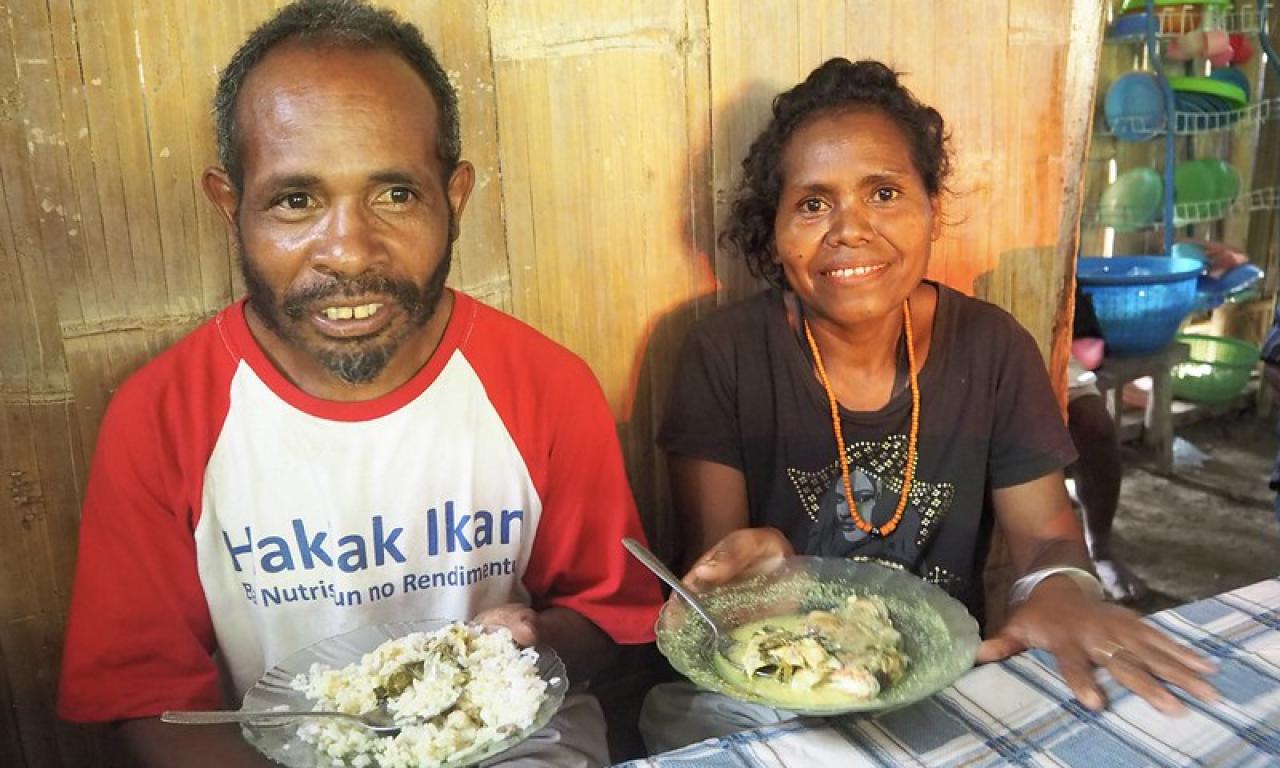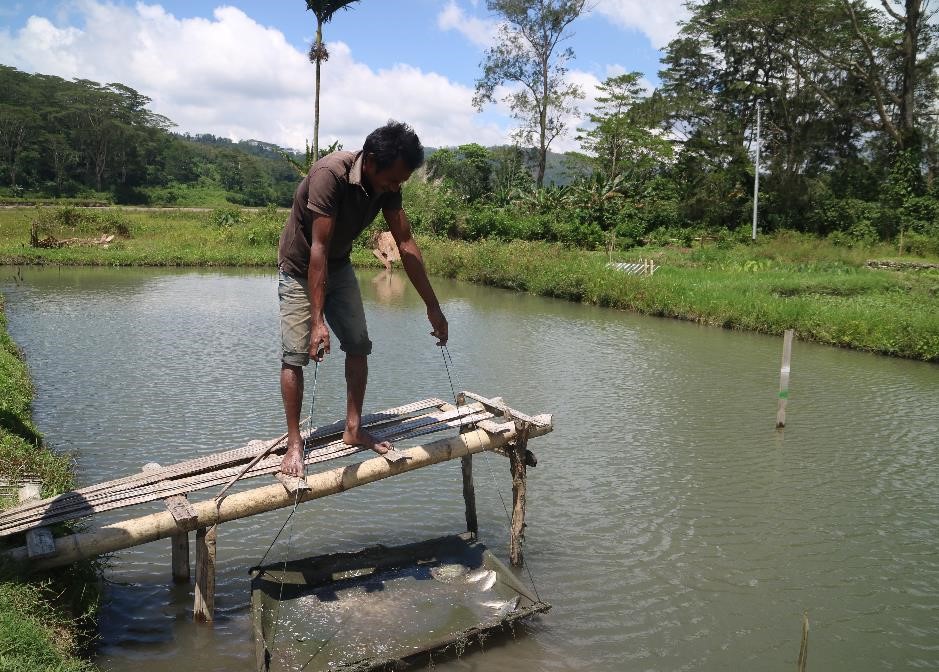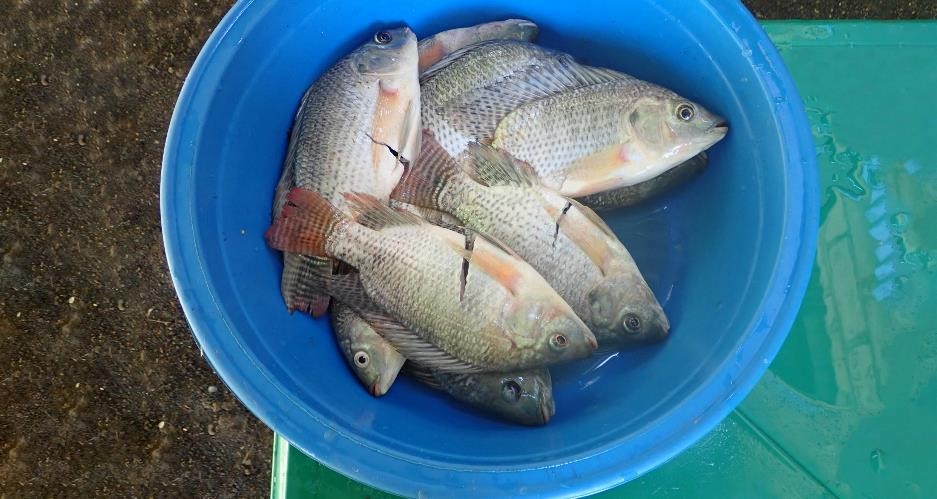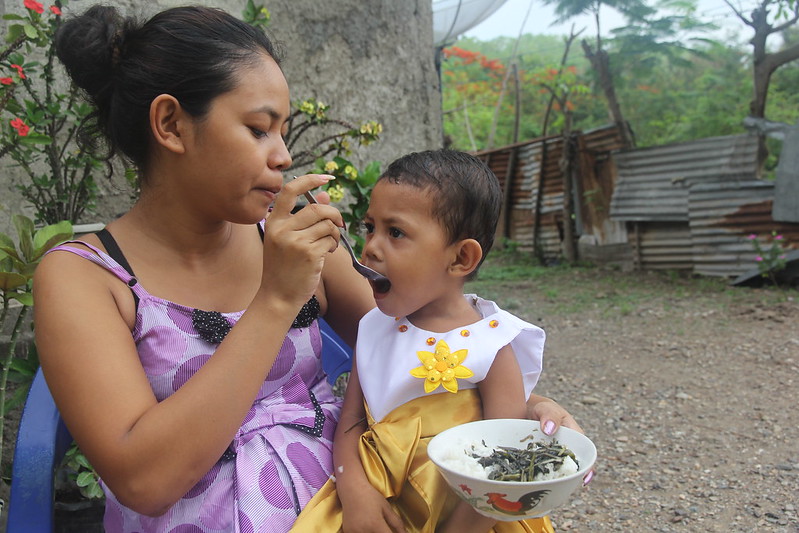
How farmed fish is nourishing rural households in Timor-Leste
A new WorldFish-led project aims to get more fish onto the plates of households in Timor-Leste to make diets more nutritious and diverse, thus improving food and nutrition security in the country.
The half-island nation of Timor-Leste is surrounded by water. And yet, most people in inland areas lack access to fish, consuming as little as 4 kg of fish per person per year.
Getting more fish into the hands of these communities is a major focus of the Partnership for Aquaculture Development in Timor-Leste Phase 2 (PADTL2) project (2020–2023). The project is led by WorldFish, funded by the New Zealand Aid Program, and contributes to the CGIAR Research Program on Fish Agri-food Systems (FISH).
“The project will support farmers by fostering public-private partnerships (PPP) to produce more genetically improved farmed tilapia (GIFT) at less cost and to get it into local markets,” said Gabrielle Isaak, First Secretary/Deputy Head of the Mission, New Zealand Embassy in Dili.
“This will enable households to access nutritious fish at affordable prices and include more tilapia in their diets, helping to achieve both national human nutrition and aquaculture goals.”
A top priority
Timor-Leste, a county of 1.3 million people, has some of the highest rates of chronic malnutrition in the world.
About 50 percent of children under five years of age are stunted and 37 percent are underweight. Forty percent of women, aged 14–60 years, are anemic.
Combatting malnutrition is one of the top priorities of the government, as reflected in the Timor-Leste Strategic Development Plan (2011–2030) and the National Nutrition Strategy (2014–2019).
The factors contributing to malnutrition are diverse, but partly due to low dietary diversity and little consumption of animal-source foods.
Increasing fish supply and consumption are seen as key, as shown by the National Aquaculture Development Strategy (2012–2030) which has a goal of increasing fish consumption from 6.1 kg to 15 kg per person per year to improve food and nutrition security.
Improving diets

Tilapia is nutritious fish for resource-poor consumers, explains Dr. Shakuntala Thilsted, Program Leader, Value Chains and Nutrition.
“It’s a nutritious food that can improve diets. Many households enjoy eating tilapia, and report that they would eat more of it, if more were available,” she said.
Shakuntala says that a diverse diet is vital for maintaining overall health and wellness.
“The bioavailability of micronutrients from plant-source foods also increases if these are eaten with fish.”
Coping with COVID-19 impacts
Timor-Leste relies heavily on imports for the supply of major food items—such as grains, meat, fish and other aquatic products—as domestic production is inadequate.
The COVID-19 pandemic has caused disruptions in the import-based food supply chain, exacerbating concerns about the country’s food and nutrition security.
“Timorese people will likely suffer from hunger and malnutrition unless the gap between food demand and supply is narrowed by increasing domestic production,” said PADTL2 project leader Dr. Jharendu Pant, Senior Aquaculture Scientist, WorldFish.
The project, with its focus on increasing fish production using a nutrition-sensitive approach, will help to close this gap.
“Attention will be given to fast-tracking the scaling of aquaculture scaling to bridge the widening fish supply and demand gaps,” he said.
“We’ll also promote integrated aquaculture-agriculture systems to maximize production of fish, vegetables and fruit, thereby further enhancing the diet diversity and nutrient intakes of households.”
Learning about nutrition

A key focus of the project is promoting the health benefits of fish and different ways to cook it.
“We want people to know just how good fish is for their health and to have some nutritious recipes with fish and vegetables on hand that are easy to use,” Jharendu said.
In parallel, the project will work with health and nutrition partners to develop and test fish dishes and fish-based products that suit local preferences.
“We will work with community groups to organize food fairs and cooking demonstrations, which include the safe preparation and tasting of nutritious meals with fish and other nutrient-rich foods,” Jharendu said.
Nourishing the young
As set out in the national nutrition strategy, a key means to improve human health is by increasing the consumption of nutrient-rich foods by children.
“In many Timorese households, children are not often fed fish out of a fear that they will choke on the bones,” said Mario Pereira, country representative, WorldFish Timor-Leste.
The project will work with the Ministry of Education to get fish and local, nutrient-rich vegetables and fruit included in its national school feeding program—an initiative that the ministry showed interest in, during the 2nd Aquaculture Forum in 2019.
“We’re aiming to get fish included in two meals a week for each child at elementary and secondary school. Getting children to eat more fish, together with other nutrient-rich foods will give them the best start in life,” said Mario.
Besides schools, hospitals and police and military barracks represent other opportunities to include fish in menus of patients and staff.

The potential of tilapia
Critically, the project will build on the work of phase one, which laid the foundations to grow the country’s emerging aquaculture sector.
“Quality fish seed and feed are now available at low cost, farmers know about good aquaculture practices, there’s growing interest by key partners in promoting aquaculture, and support is being provided by well-trained extension officers,” said the Minister of Aquaculture and Fisheries, H.E. Joáquim José Gusmão dos Reis Martins.
“But harvesting and selling fish are not the end of the value chain. We must continue working together to get more fish onto the plates of Timorese families.”
“It’s only then that Timor-Leste can fully realize the potential of fish farming to enhance food and nutrition security. I’m optimistic this will happen in the coming years.”
Project: Partnership for Aquaculture Development in Timor-Leste Phase 2
Donor: Ministry of Foreign Affairs and Trade (MFAT) New Zealand